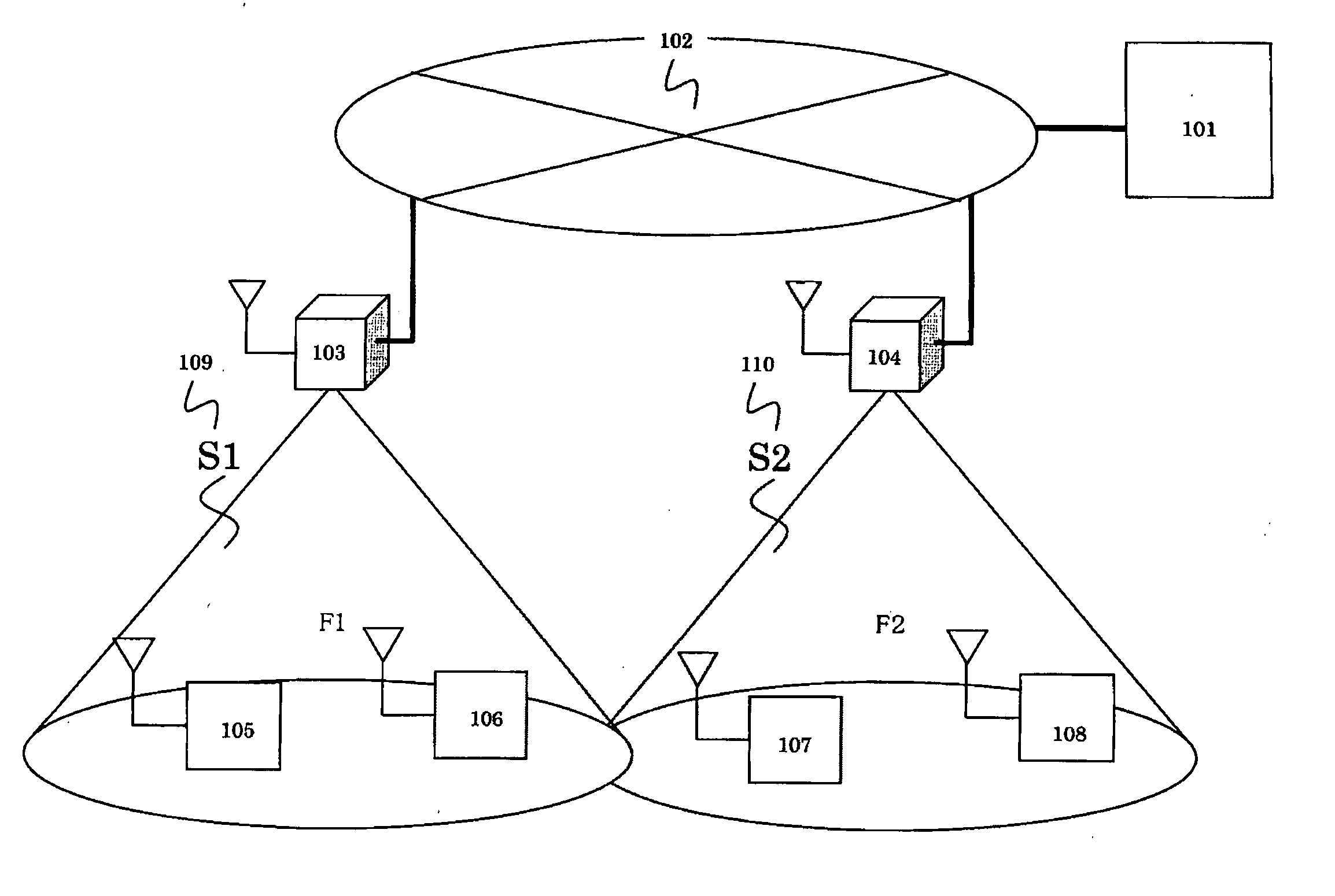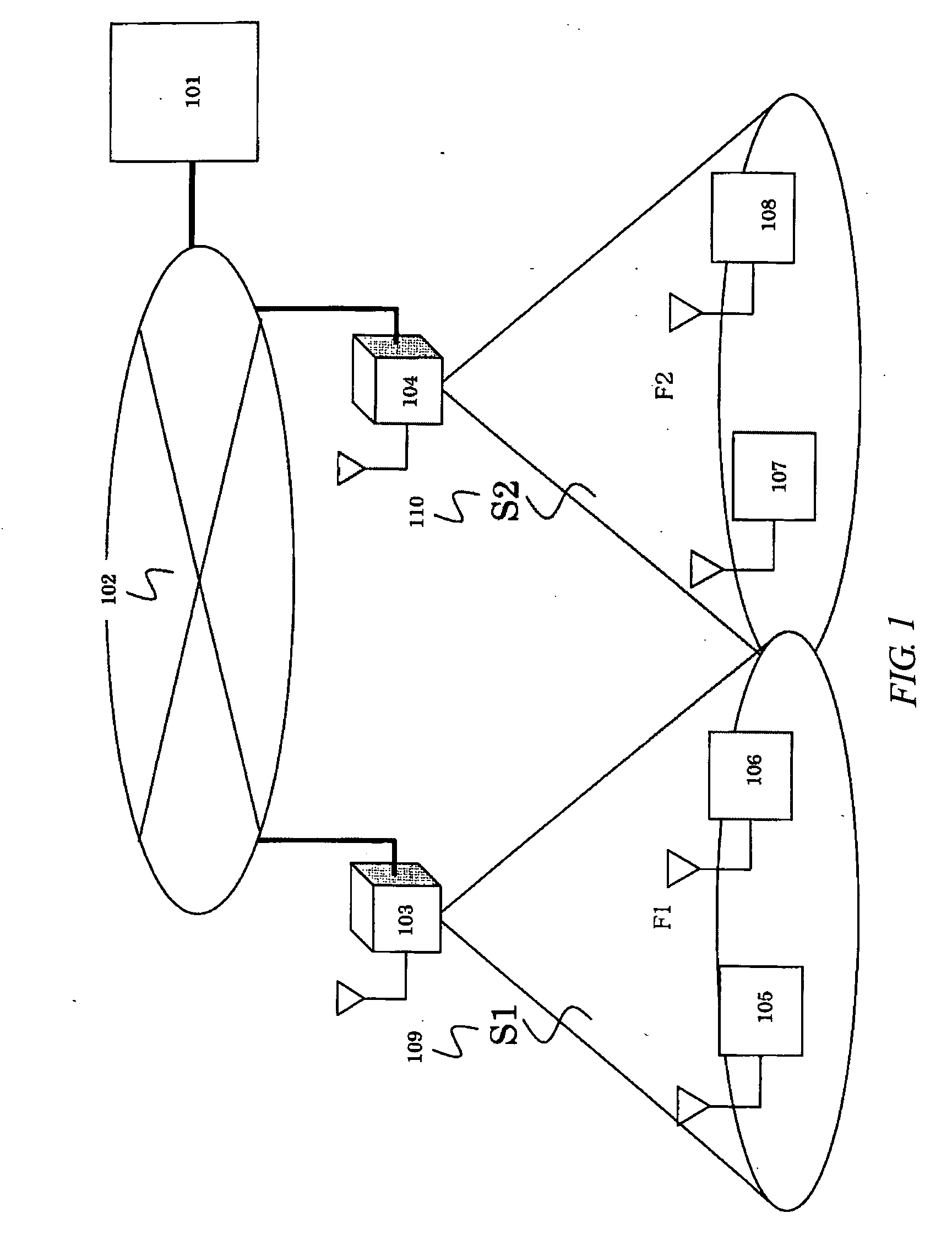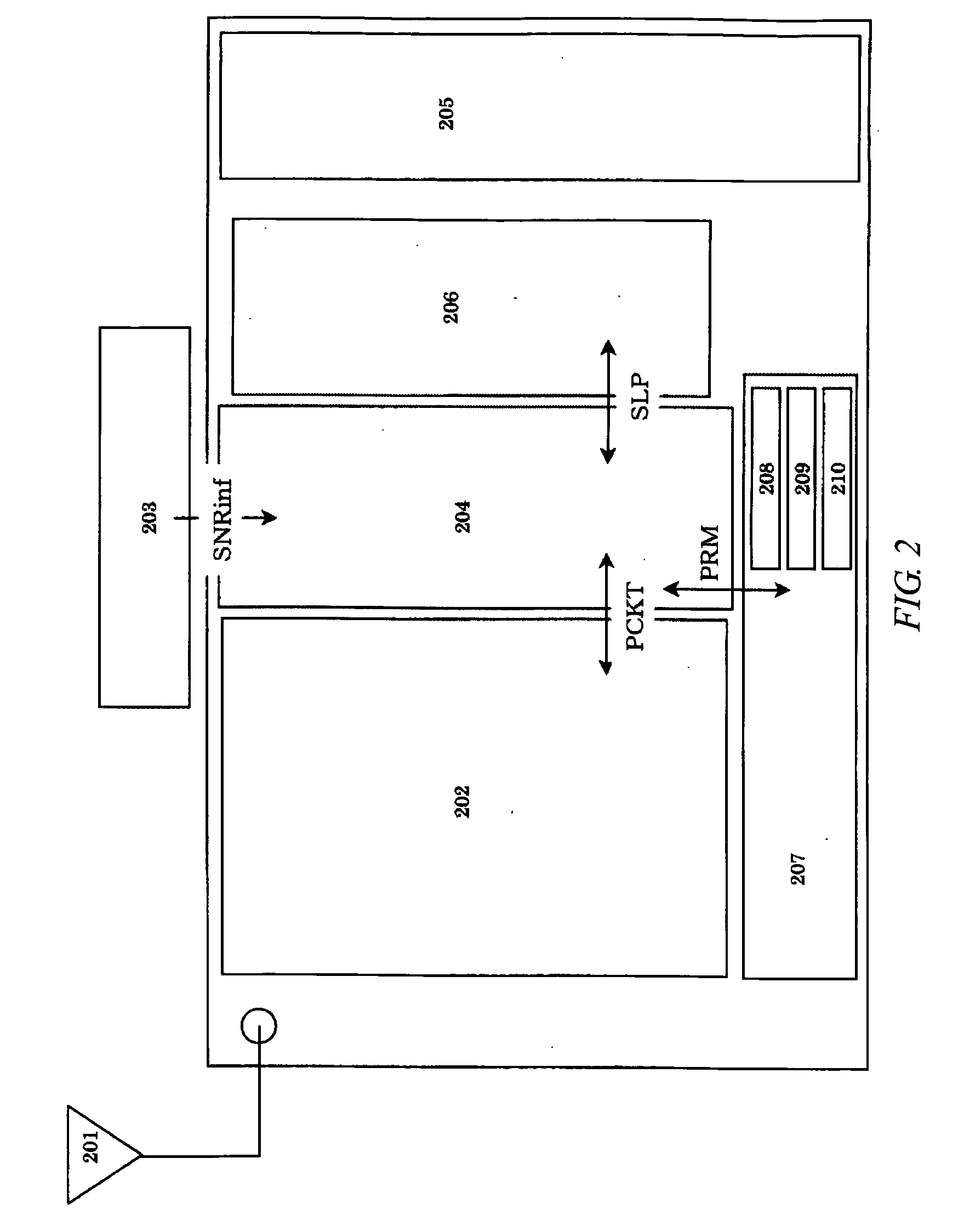Communication method
a communication method and radio communication technology, applied in the field of radio communication system, can solve the problems of time-consuming, and concentrated load on the base station, and achieve the effect of preventing deterioration of system performan
- Summary
- Abstract
- Description
- Claims
- Application Information
AI Technical Summary
Benefits of technology
Problems solved by technology
Method used
Image
Examples
first embodiment
[0034] A first embodiment of a radio communication system according to the present invention will be described. In FIG. 1, a schematic diagram of the communication system of the present embodiment is shown. The present system comprises a management server (101) for performing overall control of the entire system, Internet (102), base stations (103 and 104), and sensor nodes (105, 106, 107, and 108). F1 and F2 described in the diagram denote frequencies used in data channels of the base stations, and S1 and S2 (109 and 110) denote service areas in which the base stations can manage the sensor nodes.
[0035] At predetermined intervals, each of the sensor nodes separately uses two operations, i.e., that in a sleep state in which, in hardware, power of the members except that of a timer circuit (e.g., RTC) is caused to be in an OFF-state, and that in an active state in which power of all circuits thereof is caused to be in an ON-state. In the active state of the sensor node, sensing is p...
second embodiment
[0068] A second embodiment of the present invention will be described. In the first embodiment, there has been described a situation in which the base station assigns the sensor nodes to the normal periods of the slots in the order that the IDs of the sensor nodes are registered in the base station. However, in the second embodiment, there described a situation in which, regardless of the order of registration, the base station randomly assigns the sensor nodes to the normal periods of the slots.
[0069] In FIG. 14, there shown a method of a case in which the sensor nodes are randomly assigned to the normal periods. Each of the sensor nodes performs initial access so as to perform registration with respect to the database of the base station. Then, each sensor node is subjected to time compensation with respect to other sensor nodes by use of the command Ack packet. The sensor nodes which have undergone time compensation are randomly assigned to the normal periods, and transmit packe...
PUM
 Login to View More
Login to View More Abstract
Description
Claims
Application Information
 Login to View More
Login to View More - R&D
- Intellectual Property
- Life Sciences
- Materials
- Tech Scout
- Unparalleled Data Quality
- Higher Quality Content
- 60% Fewer Hallucinations
Browse by: Latest US Patents, China's latest patents, Technical Efficacy Thesaurus, Application Domain, Technology Topic, Popular Technical Reports.
© 2025 PatSnap. All rights reserved.Legal|Privacy policy|Modern Slavery Act Transparency Statement|Sitemap|About US| Contact US: help@patsnap.com



